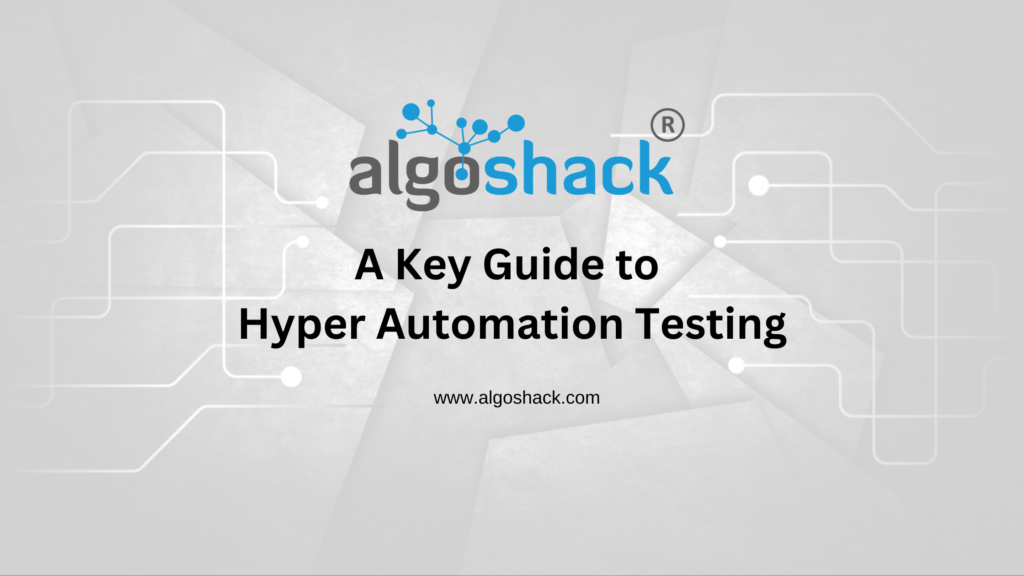Hyper-automation testing refers to the testing of various technologies involved in hyper-automation, including Robotic Process Automation (RPA), Business Process Management (BPM), Artificial Intelligence (AI), Machine Learning (ML), and Advanced Analytics.
Hyper-automation aims to automate any task or process that can be automated, encompassing a wide range of activities across various domains. It is an approach that combines various automation technologies to streamline and optimize business processes. It goes beyond traditional automation by integrating AI, ML, and other advanced technologies to enable end-to-end automation across multiple systems and processes.
Difference between Hyper Automation and Automation:
Hyper-automation represents a significant advancement in the field of automation by integrating AI, ML, and other technologies to automate complex tasks, decision-making processes, and workflows that were previously challenging to automate using traditional approaches.
- Complex Task Automation: Traditional automation focuses on automating repetitive and rule-based tasks. However, many business processes involve intricate tasks that require cognitive capabilities, such as natural language understanding, sentiment analysis, image recognition, and complex data analysis. Hyper-automation leverages AI and ML to enable systems to understand, interpret, and perform these complex tasks autonomously.
- Decision-making Automation: Hyper-automation goes beyond automating routine decisions and aims to automate more sophisticated decision-making processes. By integrating AI algorithms and machine learning models, hyper-automation systems can analyze vast amounts of data, identify patterns, and make data-driven decisions without human intervention.
- Adaptive Automation: One of the key characteristics of hyper-automation is its ability to learn, adapt, and continuously improve its automation capabilities. AI and ML algorithms enable systems to analyze data, identify trends, and adjust their automation processes accordingly.
Approaching Hyper Automation Testing:
Testing hyper-automation poses unique challenges due to the integration of various technologies such as RPA, BPM, AI, ML, and advanced analytics. Let’s explore the different aspects of testing:
- Testing AI systems may involve manual testing, test data generation, evaluating model performance metrics, and ensuring ethical considerations in AI decision-making.
- Testing RPA focuses on validating the automation workflows and processes implemented by RPA bots. It involves testing bot interactions with applications, data validation, exception handling, and error recovery.
- Testing BPM involves ensuring the correct execution of business processes and workflows. It includes testing process flows, user interfaces, integration with external systems, data validation, and error handling.
- Testing ML focuses on evaluating the performance and accuracy of machine learning models. It includes testing data preprocessing, model training, model evaluation, and inference.
Enabling Technologies in Hyper Automation Testing:
When it comes to testing the enabling technologies used in hyper-automation, some specific tools and approaches can be employed. Let us consider some of the most commonly used tools:
- For AI testing, tools like TensorFlow, PyTorch, and sci-kit-learn provide frameworks and libraries to develop, train, and evaluate machine learning models, while tools like IBM Watson AI and Google Cloud AI offer comprehensive platforms for AI testing and deployment.
- RPA testing can be facilitated by tools like UiPath, Automation Anywhere, and Blue Prism, which provide capabilities for automating test cases, managing test data, and monitoring RPA workflows.
- BPM testing can leverage tools like IBM BPM, Appian, and Bizagi, which offer features for modeling and simulating business processes, executing test cases, and monitoring process performance.
- ML testing can be supported by tools such as MLflow, TensorFlow Extended (TFX), and ModelArts, which provide functionalities for versioning, tracking, and monitoring machine learning models, as well as testing data pipelines and model deployment.
Conclusion:
Hyperautomation testing brings numerous benefits to the software development and testing process, including improved efficiency, accelerated time-to-market, enhanced accuracy, increased test coverage, and improved test data management. However, it also poses challenges such as testing integrated systems, ensuring compatibility between automation technologies, addressing data privacy and security concerns, and managing the scalability of the testing infrastructure. Despite the challenges, embracing hyper-automation testing can lead to more efficient and effective software testing practices.



